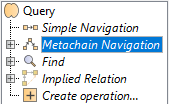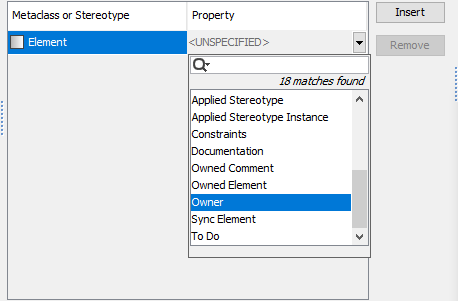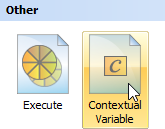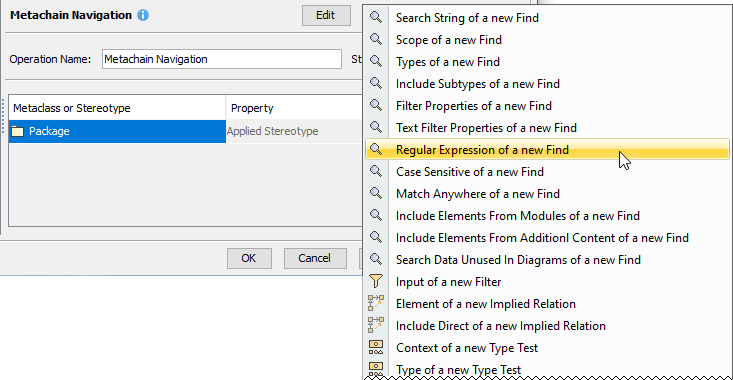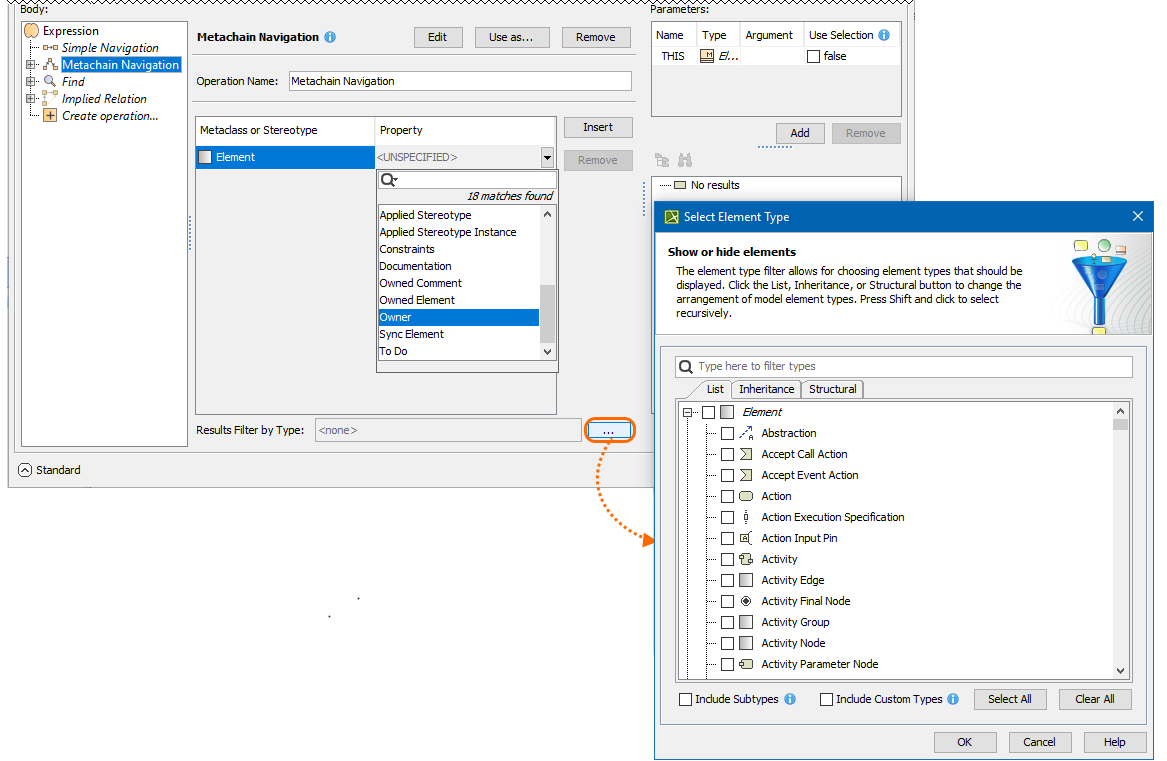On this page:
Metachain operation is one of the operation types used to specify criteria for querying models. Use the Metachain Navigation operation type when specifying indirect (multi-level) relations between elements through chains of properties.
- Metachains allow you to search for indirectly related elements, although they do not support loops and recursive relations.
- Please note that the Metachain Navigation operation returns a set.
Specifying a Metachain Navigation operation as criteria
To specify a Metachain Navigation operation as criteria
- Click Metachain Navigation on the left side of the dialog box.
- Change the name of the operation, if needed.
Click to set a style that represents the specified metachain navigation symbol.
The Style option is only available in Dependency Matrices and Relation Maps.
Click the Insert button to create a new step of the metachain. A new row is added to the list in which you need to specify a metaclass or a stereotype as well as a property or an operation.
Repeat the previous step to create as many steps of the metachain as you need for specifying the criteria.
To remove a step from the metachain, click the Remove button.
To create another Metachain operation, click Create operation > Metachain Navigation.
In the table below you can see the options that can be specified for Metachain Navigation.
| Option | Mode | Description |
|---|---|---|
Metaclass | Standard/Expert | Either a metaclass or a stereotype of a metachain step (see the image below). The first step, when created, already has a metaclass or a stereotype selected by default. This value is the context element type. The default metaclass or stereotype of the first step can be changed. The second step and all further steps are more specific: the values suggested for selection are limited according to the values selected in the first step since you will not be able to add a new step until the current step is not specified. |
| Property | Standard/Expert | A property or operation of the selected metaclass or stereotype. |
| Unique | Expert | Only one identical element will count as the result if the check box is selected. Note: the option is unavailable if Simple Navigation is nested directly under the root union. In such a case, the root union controls the uniqueness. The option is especially important to return non-unique numeric values to correctly execute mathematical operations (such as Sum). |
Manipulations in Expert Mode
The Expert mode allows you to change the Contextual element of a Metachain Navigation operation, create a new operation, and more.
Changing the Contextual element of a Metachain Navigation criterion
To change the Contextual element of a Metachain Navigation criterion
- On the left side of the dialog box, expand the Metachain Navigation criterion and select the Context parameter.
- Click the Reset button on the Context specification panel.
The value of the Context parameter becomes null. Select a new context from the list of operations and element types.
Information
To restore the original context, expand the Other group, and click Contextual Variable.
Using the expression of a Metachain Navigation operation as a parameter of another operation
To use the expression of a Metachain Navigation operation as a parameter of another operation
- On the left side of the dialog box, Click Metachain Navigation.
On the criteria specification panel, click the Use as button, and select the appropriate command.
- Specify other parameters of the new operation.
Filtering results by type
To filter results by type
- Next to the Result Filter by Type line, click the button. Select Element Type dialog opens.
- Select the element types.
- Specify the options.
